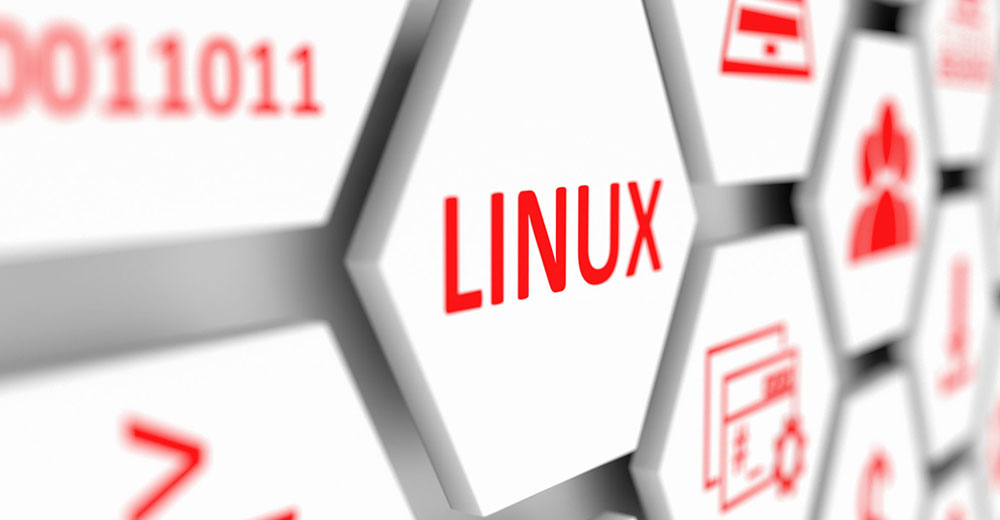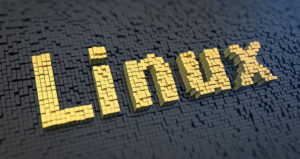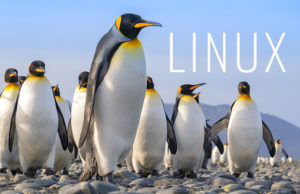Happy Birthday, Linux. At 30 years old, you have made quite a reputation for yourself. Having spirited the rise of open-source software, you have turned the world of proprietary computing upside down.
Of course, you had a bit of a premature start. You entered the world of technology with little more than a kernel to call your own. That was the intent of a young computer science student from Helsinki named Linus Torvalds in doing this personal fun project. In 1991, he created your code that would become the basis for a completely new approach to operating systems for computers.
The rest of that story, as they say, is history.
You suffered a name change at first. You started out being called Freax, as in “free,” “freak,” and “x” (referencing the Unix computer OS). But eventually, your creator came around to sharing his own lineage with you, christening you Linux.
Linus and his would-be computer cohorts propped you up with other code components to talk to. That combination formed a growing list of Linux distributions to power a variety of free computer operating systems.
Among the first was in 1992 was Slackware created by Patrick Volkerding. You both made a big hit for years holding an 80 percent share of the non-proprietary computer market. A few years later you had some great company. Some of Slackware’s popularity slid away, though, with the arrival of Red Hat Linux. But your kernel remained the soul of what makes Linux, well — Linux.
In 1992, four dudes — Thomas Fehr, Roland Dyroff, Burchard Steinbild, and Hubert Mante — introduced you to a new playmate called the Suse Project. That creation formed Suse Linux. A few years later Suse spawned separate commercial desktop and server enterprise editions. OpenSuse joined the relatives as the free open-source version.
More Family Diversity
Debian joined the family lineage as one of the first full-fledged Linux distributions in August 1993, created by Ian Murdock. It took him three more years to release the first stable version. What made your Debian cousin so significant was Murdock’s design for a Linux distro anyone could download and use for free. He eliminated the need for users to compile their own applications from source files.
Murdock made Debian Linux user-friendly and easy to adopt by using a live CD. This made it possible for new adopters to check out Linux without actually installing it to run it.
Business users got a special adoption boost when Red Hat Linux, which was released in 1995, debuted the Red Hat Enterprise Linux (RHEL) in 2003 as a paid support distro. Business-minded home users experienced a free community edition. Fedora became the proving ground for many of the features promoted to the RHEL releases.
In 2000, Daniel Robbins brought into the Linux world Gentoo Linux. It targeted developers and enterprise users with a strong connection to an alternative Unix-like BSD operating system that made managing networks easier.
That same year, Judd Vinet introduced the world to Arch Linux. It was based on the concept of rolling updated components into existing installations so major re-installation milestones were eliminated. This advanced concept geared the new distro toward more experienced users who were better equipped to handle the more complicated maintenance and configurations Arch coding required.
A Touch of Modern
A major development in the adoption of the Linux OS for both industry and home occurred in 2004 with the release of Ubuntu Linux. Its founder, South African mogul Mark Richard Shuttleworth, developed Ubuntu to be an easier, friendlier way to use the young Linux OS. His company targeted home and SMB users along with major enterprise companies.
A newer entrant to modernizing Linux’s popularity is the Linux Mint distribution. Started in 2006 by Clément Lefèbvre, it is based on Ubuntu and is intended to be very user-friendly and is especially good for beginners.
Linux Mint came about as a result of a major design change in Ubuntu. Lefèbvre succeeded in picking up where Ubuntu diverted. One of its mainstays is the in-house development of the Cinnamon desktop environment.
Another reason for Linux Mint’s growing popularity is its blending of some proprietary software to enhance user convenience in installing available options themselves. Other modern Linux distros do this as well. But Linux Mint makes this a focal point of its UI standard.
Seemingly Limitless Options
Depending on the counting process and source, the actual number of Linux distributions is far more expansive today than in the first two decades of the Linux kernel. Some sources put that number at over 600 Linux distros with about 500 in active development. Still, other sources asses the number of Linux distros to exceed 1,000.
It all depends on how you categorize the vast variety of form factors ranging among desktops, servers, laptops, netbooks, mobile phones, and tablets. Some distros are staffed by a single developer. Others encompass large communities of volunteers, designers, coders, and testers globally. It seems that for every Linux distro that goes inactive or fully disappears, one or more newcomers fill in the gap.
All of this is the result of you, Mr. Birthday Linux. Your power and influence are awesome!
Inclusion With Diversity
The Linux OS unwittingly became a place for every possible old and new computing concept. Distro developers made many releases that mimicked and improved features and innovations from other distros. Depending on the whims of the Linux developers, different distros were offered for different folks’ computing styles.
Two primary developmental pathways emerged. Either a new distro release would follow the design and operational philosophy of a particular Linux family — be it Gentoo, Arch, Debian, Suse, Fedora, etc. — or it would be an independent offering not based on any particular Linux family. Also, sub-families exist in Linux.
For Instance, a distro could be based on one major family line but create some of its own unique elements. Consider that a very popular Linux line is Ubuntu, which is technically based on Debian. Newer distros came along that were based directly on Ubuntu rather than the broader Debian ecosystem.
Part of the derivative distro would be the unique application choices bundled in the release. Some derivatives lack access to many of the larger Linux families’ software repositories. Others have different update processes and package management tools for adding software.
Another distinguishing component with the Linux OS is the concept of desktop environments. Some distros offer only one chosen desktop. Others provide a large collection of desktop options. Some distros are lightweight, meaning they run on older hardware that needs less RAM and less powerful internal components.
These scaled-down designs often rely on window managers instead of fully-featured desktop environments. Much of the same can be said about the structure and operating components built into independent Linux distros as well.
Designing Factors
This is what distinguishes the Linux OS from other alternatives like macOS and Windows operating systems. The operating environment can be classic Linux in design. It can be minimal, or it can be something more feature packed. It all comes down to the user interface (UI) and user preferences.
Just as distro developers slice and dice the UI and Linux family components, so do they often modify existing features in the desktop design. So two different distros running the same desktop environment can be very different.
Not every Linux distro runs the same Linux kernel, either. Some distro developers stave off potential compatibility issues with the newest kernel releases by waiting for a release cycle or two of their own distro products. Other distro developers base their latest distro upgrade around a just-released kernel version.
Adding a Modern Touch
The Linux kernel, though 30 years old as the heart of the Linux OS, is not the same today than it was in its infancy. Torvalds oversees an ongoing process of updating the Linux kernel to provide better hardware, software, and security reliability.
In the same way that Linux kernel developers and distro maintainers update, modify, and improve (or sometimes worsen) the performance, so do desktop environment communities. Once popular designs and functionalities can fall out of favor. Design changes can send users screaming to other options within Linux.
That, too, is the power and flexibility that Linux acquired over these last three decades.
So once again, Happy Birthday Linux. You have had great success with dominating enterprise-server jobs and taking over cloud computing.
Still, you have yet to give us the Year of the Linux Desktop, though. But keep growing. Hopefully, you will have reason to celebrate that fete at an upcoming birthday.
The options you provide make modern Linux an operating system like no other. You even have established your family ties in Android and Chrome OS. But those are accolades for other birthday celebrations.




























































Part of the history of Linux is also all the Operating systems that went defunct. My first Distro was Xandros, no longer around. My second attempt was the original Solus, shut down in one day leaving users adrift. Next Point Linux, dead from lack of time from the developer. Yet I saw the potential of Linux and finally found Zorin which I used for years before switching to Ubuntu Mate LTS because Zorin which bills itself as a replacement for those coming from Windows became to Windows like for me. (locked down and hidden), Though I went through many trials and disappointments with Linux, I AM glad I stayed with it, it was worth the effort,